Real-World Testing: A Timeless Necessity For The Tyre Industry
- By Sharad Matade & Gaurav Nandi
- December 26, 2024
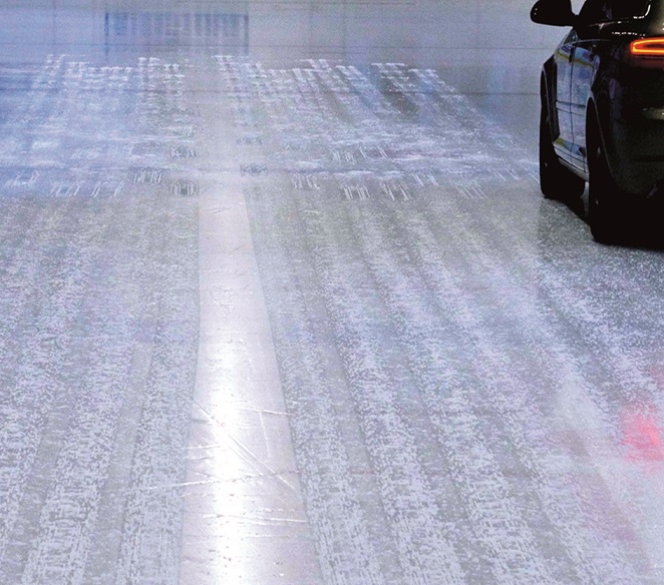
Making a tyre is an extensive process that includes everything from formulation to testing. With the advancement in software-defined technology, tyre testing is increasing within a simulated environment. However, as real as the rubber wheel is, its testing in real-world environment stands as imminent in future course despite the current trend of simulation.
Alluding to this, Black Donuts Head of Tyre and Material Development Ilkka Lehtoranta told Tyre Trends, “Alongside the advanced laboratory equipment and various simulation methods, real-world tyre testing remains essential now and in the future. Physical testing in diverse conditions is critical for final evaluation and validation. Real-world tyre testing will continue to play a significant role moving forward. At Black Donuts, we offer comprehensive tyre testing services through our subsidiary, BD Testing. This company specialises in outdoor testing to ensure that products perform reliably in all environments.”
Commenting on the role of simulation in tyre development, he said, “Simulation plays a critical role in tyre development, offering a proven and essential part of the design process. One key type of simulation is finite element analysis (FEA), a mathematical method used to model and simulate physical phenomena. FEA is widely employed across industrial sectors including tyre manufacturing to predict and validate design performance before creating physical prototypes.”
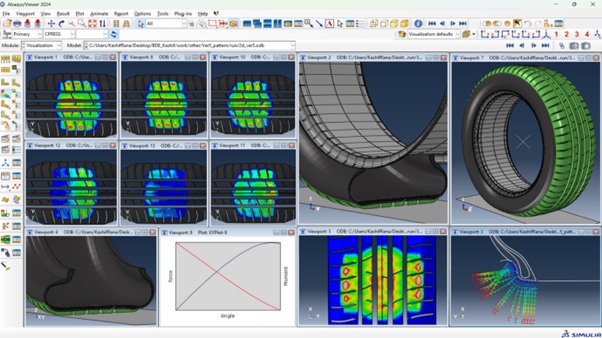
“For tyre development, simulation tools provide significant advantages. By conducting design verification and validation virtually, companies can reduce the need to produce experimental tyre, which saves raw materials and minimises waste. This approach not only supports environmental goals but also accelerates the development timeline, allowing for faster iterations and refinements. Black Donuts integrates various simulation methods into its development process, heavily relying on the results to optimise designs,” he added.
Testing facilities
The Finnish company offers comprehensive tyre testing services with a primary focus on outdoor testing rather than indoor facilities. While indoor testing facilities are widely available globally, including in Europe, Asia, India and North America, Black Donuts has chosen to concentrate on outdoor testing. The company leverages the expertise of skilled test engineers and drivers, who understand the nuances of environmental and external factors, to deliver dependable testing outcomes.
“We operate a proving ground in northern Sweden, where winter tyres are tested under snowy and icy conditions. Additionally, we have a testing centre in Finland’s Tampere region, which serves as a hub for evaluating tyre properties across a range of conditions. The facilities enable grip testing on ice, snow, wet and dry surfaces; noise testing for internal and external evaluations; handling and comfort assessments; aquaplaning analysis and tailored tests developed to meet specific customer needs,” informed Lehtoranta.
He mentioned that test drivers are central to Black Donuts' outdoor testing process as their expertise in assessing tyre behaviour is critical for validating designs and providing feedback to engineers. This collaboration ensures the test results are seamlessly integrated into the design and development process, allowing engineers to refine tyre properties based on real-world performance insights.

Winter testing is conducted during the colder months to utilise natural snow and ice conditions. While the company does not have an indoor snow-testing facility, it makes use of local resources such as ice halls for ice-related evaluations. For summer tyres, the focus shifts to testing grip, handling and noise levels under both dry and wet conditions.
In addition to testing during tyre development, Black Donuts supports homologation and certification processes. Through its subsidiary, BD Testing, the company provides accredited testing services and official test reports required for certifications by authorities. This includes European homologation tests for snow and ice performance, as well as specialised assessments such as road wear impact evaluations for studded tyres in Scandinavian markets.
The company also conducts internal testing to collect data, monitor market trends and benchmark tyre performance. “This continuous research helps us to identify industry standards and emerging trends, ensuring that our tyre development projects remain innovative and competitive,” averred Lehtoranta.
Industry peek
Black Donuts provides end-to-end solutions for the global tyre industry, catering to both manufacturing and tyre research and development needs. Its services cover tyre design and production, materials research and development, making the company a comprehensive partner for tyre manufacturers globally. Whether supporting the establishment of new tyre plants, upgrading existing facilities or offering specific technical expertise, it has a broad portfolio of engineering and technological solutions.
In production, Black Donuts assists manufacturers with everything from setting up greenfield projects to improving brownfield facilities. For existing manufacturing lines, the company conducts thorough audits to identify bottlenecks, inefficiencies and quality issues. The focus often includes increasing automation, enhancing productivity, reducing manufacturing costs, improving quality, minimising scrap and waste and even reducing tyre weight. These solutions are tailored to meet the specific demands of the client.
For greenfield projects, it offers turnkey solutions. These include site selection support, plant layout design, architectural planning, defining machinery specifications, automation strategies and utility calculations. During the execution phase, an on-site engineering team supervises construction, machinery installation, commissioning and the ramp-up of production processes. The company also trains operators, troubleshoots quality issues and supports clients in improving efficiency. The level of post-production support is flexible with options for ongoing assistance tailored to the client's needs.

Alluding to how the design and production process differ across regions, the executive said, “The design and production processes themselves are generally consistent across regions. However, automation levels may vary based on factors like labour costs and plant location. European facilities, for instance, often require higher automation levels due to higher manpower costs, though automation is increasingly being adopted in Asia as well. This trend has significantly reduced manpower requirements in tyre manufacturing globally, driven by advancements in automation technologies.”
Research and development
In tyre development, significant trends include the growing demand for sustainability, increased automation in production processes and evolving design needs tailored to regional and market-specific conditions. Tyre materials development is a subset of tyre development but is critical due to its role in addressing environmental and performance challenges. Black Donuts works on both these aspects, helping clients innovate while navigating changing demands in the tyre industry.
The push for sustainability is the most pressing challenge in tyre material development. There is an increasing emphasis on replacing fossil-based materials with sustainable alternatives like bio-based and recycled raw materials. Black Donuts plays a pivotal role in identifying and testing new materials available in the market, integrating them into tyre compounds and ensuring its compatibility with production processes.
In addition to working with existing materials, Black Donuts has initiated its own research and development efforts to explore innovative, out-of-the-box sustainable solutions. These include new bio-based raw materials currently under internal development, which are expected to be launched soon.
On the tyre development front, it offers comprehensive services for creating new tyre lines across segments like passenger car radial (PCR), truck and bus radial (TBR) and off-the-road (OTR) tyres. The designs cater to various markets including Europe, US, Asia and Africa, ensuring optimal performance under different environmental and regulatory conditions.
Customisation for specific client needs, whether summer or winter tyres, and adapting designs to suit regional preferences are also part of the company's everyday operations.
Competitive edge
The rapid evolution of technology, automation and sustainability trends demands agility and adaptability. Black Donuts maintains an active presence in the market, staying updated on global developments by leveraging its extensive partner network, including machinery and raw material suppliers, to gather insights and anticipate emerging trends.
 Alluding how the company selects partners, the executive revealed, “The partner selection process is fundamental to delivering high-quality, innovative solutions. Many members of our team have decades of experience and longstanding relationships with suppliers, which provide a solid foundation for selecting trusted partners. Besides, there are several factors that are taken into account to source new partners.”
Alluding how the company selects partners, the executive revealed, “The partner selection process is fundamental to delivering high-quality, innovative solutions. Many members of our team have decades of experience and longstanding relationships with suppliers, which provide a solid foundation for selecting trusted partners. Besides, there are several factors that are taken into account to source new partners.”
One of the most crucial factors in selecting partners is the technological capability. Black Donuts prioritises partners that offer cutting-edge technologies, which can add value to both the company and its customers. It also carefully evaluates the ability of potential partners to deliver machinery, raw materials and components as promised. Moreover, the company seeks partners who share values of sustainability.
While Black Donuts draws on its established relationships with trusted suppliers, the company remains proactive in sourcing new partners and exploring the latest advancements in technology and materials.
Sustainability
The executive noted that in the next five years, the proportion of renewable or bio-based materials in tyre production is expected to remain relatively modest. “Currently, aside from natural rubber, which makes up around 20 percent of tyre materials, the use of other renewable materials is almost negligible. While the industry faces challenges in sourcing and incorporating bio-based and recycled raw materials, it is estimated that within five years, the share of such materials could reach 30-35 percent of the total tyre content,” said Lehtoranta.
Alluding to industry goals of incorporating 100 percent renewable materials in tyres by 2050, he noted, “Incorporating 100 percent renewable materials in tyres is possible, but it will require collective action across the entire industry. All stakeholders must align and collaborate towards this common goal. Many mid-sized and smaller companies may struggle with this transition on its own, which is where industry partners can offer valuable support. This is also why companies are increasingly focusing on researching and developing new bio-based raw materials in order to expand the availability of these alternatives in the market. However, scaling these innovations to a commercial level remains a challenge as many promising ideas have not yet been fully realised on a large scale,” informed the official.
He also noted that achieving sustainability in tyre production will undoubtedly require significant investment. A key challenge is that sustainable raw materials are currently more expensive than conventional alternatives. Unfortunately, many end consumers are not yet willing to pay a premium for tyres made with sustainable materials.
Market presence
Black Donuts has a presence on all continents. “We have a strong market footprint, serving a wide range of regions. For instance, of the 25 largest tyre manufacturers, 20 have been or are currently our customers. We also have upcoming projects across Europe, Asia, North America, South America and Africa, highlighting our global reach and ongoing expansion,” said Lehtoranta.
He added, “In terms of revenue, our biggest business segment revolves around providing end-to-end solutions for tyre plants including services related to tyre factory setup and operations. This is the largest segment in terms of financial impact. Additionally, tyre and material development is another major part of our business contributing significantly to our overall revenue.”
North America is one of its largest markets, followed by Europe and Asia, though revenue distribution can vary year by year due to the nature of projects.
He also noted that regulations play a crucial role in driving the business. The regulation concerning studded tyres, for instance, which has been important in the European market. Winter tyre regulations, particularly the requirement for the snowflake symbol on tyres, are also significant, especially in Nordic countries.
Additionally, a newer regulation being prepared by the European Commission concerning tyre abrasion, which is becoming a more prominent issue due to sustainability concerns, is also slated to drive business.
Commenting on the same, the executive said, “Tyre abrasion, especially concerning microplastic emissions, has gained attention in Europe as tyres are recognised as a major contributor to microplastic pollution. The industry and authorities are now focusing on reducing this issue by improving tyre wear properties. The goal is to ensure that tyres generate less microplastic per kilometre driven. This is particularly relevant in regions with snowy and icy roads, where tyre performance and durability are critical.”
Furthermore, he highlighted that the difference between snow and ice significantly impacts tyre performance. Ice presents much lower friction than snow, which is why ice poses a more challenging driving condition. Tyres perform worse on ice, resulting in longer stopping distances. In regions with icy roads, like the Nordic countries, manufacturers often use studs to enhance grip on ice, improving safety by reducing braking distances.
Expansion and demand
The executive mentioned that the company is expanding in the Asian and North American markets. “While winter tyres are a big demand in these regions, it's important to note that winter tyre usage varies by region. In China, for example, there is a significant demand for winter tyres, particularly in colder regions, and Japan has a large market for them as well, with regulations encouraging its use. North America, especially in regions with harsh winters, also has a strong market for winter tyres,” said Lehtoranta.

“Despite the slowdown in the European market and concerns about the US market, we still see North America as a strong growth area for us. We haven't noticed any significant slowdown in our business there and the market remains promising. However, we also see great potential in Africa, where we are seeing a lot of investment activity,” he added.
Answering what factors led the company to explore avenues in Africa, he said, “Several factors are driving the growth potential in Africa. Currently, there is little local tyre manufacturing in the region and many countries are looking to establish local industries to boost the economies and create jobs. Additionally, Africa has significant natural resources including natural rubber and oil, which can be used to produce synthetic rubbers and other raw materials needed for tyre manufacturing. Local production would enable companies to add value by refining these raw materials into finished products like tyres, creating a more sustainable and profitable cycle.”
Commenting on future plans, he said, “Our focus will be on the entire tyre lifecycle, from raw materials to production, performance and ultimately, the end of life of the tyres. We are working on developing solutions that handle tyre disposal and recycling with the goal of creating a fully sustainable tyre manufacturing process. This approach would ensure that our products and services are environmentally friendly throughout the entire supply chain.”
Industry challenges
Tyre manufacturing factories often encounter several challenges when setting up greenfield and brownfield projects. One of the primary challenges is managing the project’s schedule and budget, ensuring that the project stays on track and within financial constraints. Another critical aspect is reaching the targeted capacity for the plant, which can be challenging given the complexities of large-scale projects.

Additionally, there are technological hurdles that the company must overcome, especially in terms of innovation and research. Developing new technologies and sustainable solutions for the industry is not an easy task and requires a long-term commitment.
In terms of business challenges, the company is focused on technological innovation and research. Developing cutting-edge technologies and creating sustainable solutions for tyre manufacturing is a key priority. However, this process is often time-consuming and requires significant effort. This is where Black Donuts’ know-how and cutting-edge solutions come into play. The company is currently focused on pushing the boundaries of what is possible within the tyre industry, particularly regarding sustainability.
Regarding operations in India, the company is in the early stages of its expansion. Although it does not have a physical office in India yet, it has begun operations under the leadership of a technical director. The goal is to develop the business in India and gradually establish a technical centre that will focus on tyre simulation and other technical areas of tyre development.
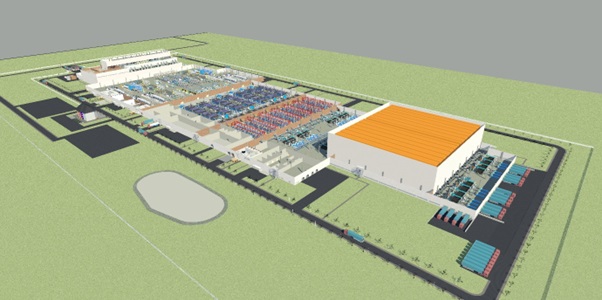
The Chinese market is another area of focus. While it is not the largest market for the company, it remains an important one, with ongoing projects and customers in China. The company recognises that China is a significant player in the global tyre industry, and it continues to engage with the market, even though it is not the biggest revenue driver.
Additionally, the company is observing a trend where manufacturing is returning from Asia to local markets, a shift that began before the pandemic and has been accelerated by it. This trend is visible in regions like Africa, North America and Europe, where companies are establishing local production to mitigate supply chain issues and reduce reliance on distant markets. This shift represents a significant opportunity for the company to expand its operations and grow its presence in these regions.
- United Nations Economic Commission for Europe
- UNECE
- Jean Rodriquez
- Working Party on Noise and Tyres
- GRBP
Global Tyre Standards
- By Gaurav Nandi
- December 08, 2025
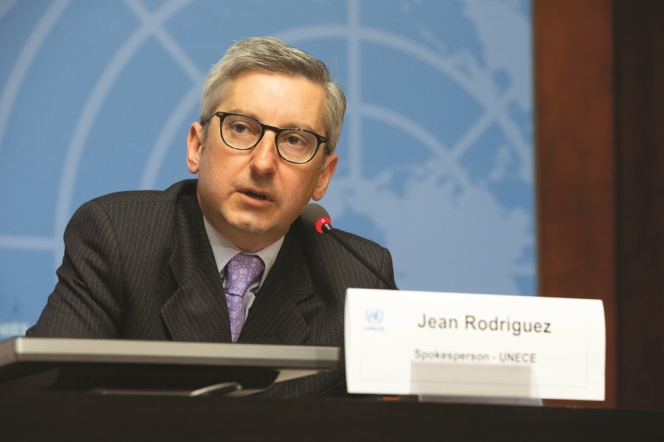
In a discussion with Tyre Trends, Chief of the United Nations Economic Commission for Europe (UNECE) Information Unit Jean Rodriguez detailed how the Working Party on Noise and Tyres (GRBP) is driving international regulations on tyre safety, noise and sustainability. From pioneering micro-plastic emission measurement to strengthening wet-grip requirements and updating studded and retreaded tyre rules, Rodriguez emphasised UNECE’s role in shaping a harmonised global framework that balances consumer safety with environmental protection.
What is the role of the Working Party on Noise and Tyres (GRBP) within UNECE?
As one of the six subsidiary bodies of the World Forum for Harmonisation of Vehicle Regulations, hosted by UNECE, the Working Party on Noise and Tyres continues to spearhead globally harmonised standards through UN Regulation No. 117, covering tyre rolling resistance, noise, wet grip and, with recent developments, abrasion measures. These UN Regulations form the backbone of safety and environmental tyre specifications adopted by numerous countries and a substantial share of tyre producers globally.
What were the key regulatory changes between 2022 and 2025?
In early 2024, the Working Party adopted the first-ever methodology to measure particle emissions from tyres, critical for tracking micro-plastic emissions via two protocols including real-world 8,000 kilometres convoy tests and 5,000 kilometres rolling-drum lab tests. These are slated for integration into a new UN Regulation by September 2025 for passenger tyres, expanding into heavier vehicle categories (C2, C3) into 2026 and 2027.
Once in force, these regulations will contribute to significantly reducing micro-plastic pollution. In 2016, tyre abrasion was estimated to represent 78 percent of the 1.3 million metric tonnes of microplastics entering the ocean.
The UNECE methodology to measure particle emissions from tyres will become the reference methodology of the Euro 7 proposal of the European Union. Moreover, EU tyre regulation and labelling covering noise, wet grip, rolling resistance and environmental transparency build directly on UNECE’s standards.
How has UNECE addressed tyre safety at legal minimum tread depth?
GRBP introduced requirements ensuring that tyres at the legal minimum tread depth (1.6 millimetres) retain a minimum wet-grip level relative to new tyres. This is a shift towards safety and sustainability by permitting consumers to drive worn tyres safely, potentially reducing waste. It obliges manufacturers to design tread compounds and patterns that preserve wet performance over the tyre’s life, not just when new.
What regulations were introduced for studded tyres in 2022?
In September 2022, a new UN Regulation to cover performance requirements and marking of studded tyres entered into force to increase road safety by introducing harmonised snow grip requirements for studded tyres. It simplified the legislative situation in several countries that allowed the usage of studded tyres on public roads, introduced strict requirements and procedures for testing their snow grip and allowed consumers to benefit from more coherent winter tyre markings.
What additional areas has UNECE been working on to align safety and environmental goals?
By refining noise standards, updating testing protocols and promoting tyre lifecycle efficiency, UNECE is steadily shaping regulations to match environmental and safety objectives. This includes work on enhanced noise testing for tyres (UN Regulation No. 117) and motorcycles (UN Regulation No. 41) and vehicle alert systems (UN Regulation No. 138/51)
How does UNECE ensure global relevance, transparency and participation in its work?
All this work in setting technical specifications testifies to UNECE’s high relevance in providing a global harmonisation framework. Its expanding scope, especially in environmental dimensions such as micro-plastic emissions, is helping it maintain policy leadership and normative force, shaping tyre safety, noise and environmental performance worldwide.
A very important aspect of UNECE work is that it prevents fragmentation of the tyre regulatory landscape. GRBP is open to governmental experts from any member country of the United Nations and to any regional economic integration organisation set up by member countries of the United Nations including experts of governmental organisations and non-governmental organisations (NGOs).
UNECE provides secretarial support to WP.29 and its working parties, facilitating negotiations between contracting parties to the 1958, 1997 and 1998 agreements. More than 100 experts participate in the sessions of GRBP and all documents considered by GRBP are available in the public domain.
What are UNECE’s priorities going forward to support safety and the circular economy?
Leveraging its technical authority and norm-setting capacities, UNECE is uniquely positioned to foster a globally harmonised tyre labelling framework that covers rolling resistance, wet grip and, for the first time, tyre abrasion. This framework promotes consistency, environmental protection, consumer transparency and ultimately supports worldwide regulatory alignment.
At its session in September 2025, GRBP will consider the proposal for a new UN Regulation on the uniform provisions concerning the approval of tyres with regard to abrasion performance.
UNECE is also updating UN Regulations no. 108 (passenger car/towed vehicle Retreaded tyres), 109 (commercial vehicle retreaded tyres) and 172 (snow performance of retreaded tyres) to ensure retreaded tyres meet the same safety standards as new tyres, even in challenging winter conditions but in a way that makes regulatory processes smoother and more conducive to circular economy practices.
Trelleborg Tires Retains Crown As Brazil's Best Agriculture Tyre
- By TT News
- December 07, 2025
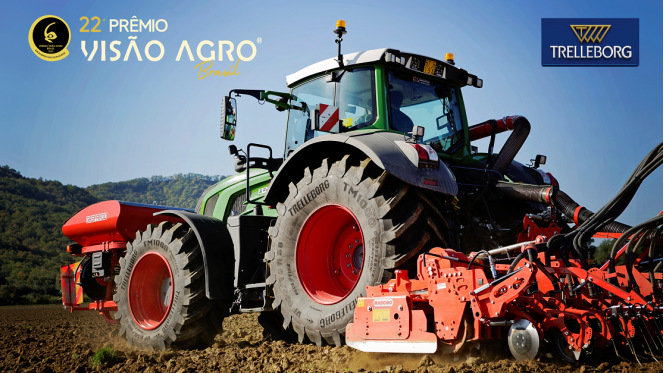
For the second consecutive year, Trelleborg Tires has earned the prestigious title of Best Agriculture Tyre at the 22nd Visão Agro Brazil Awards. This 2025 accolade, presented during a ceremony in Ribeirão Preto, highlights the company’s dedicated role in advancing Brazilian agribusiness through technological leadership and a commitment to sustainable practices. The award was received on behalf of the company by Fábio Metidieri, Agri Sales Director for Yokohama TWS Brasil.
Central to this achievement is Trelleborg’s ongoing innovation, particularly the expansion of its ProgressiveTraction technology within the TM tyre series. This engineering, featured in models from the row-crop TM600 to the high-horsepower TM1000, utilises a dual-edge lug design. The tread operates progressively on the soil to enhance traction, promote self-cleaning and minimise vibration. The resulting benefits include improved operational efficiency, increased tyre durability and superior soil protection, directly supporting farmers’ goals for greater productivity and environmental stewardship.
The company’s deep roots in Brazil, supported by a specialised local team, rigorous field testing and strong manufacturer partnerships, ensure its solutions are finely tuned to regional demands. This local infrastructure allows for responsive technical service and keeps product development closely connected to the practical challenges faced by the agricultural sector. The Visão Agro Brazil Awards, judged by a panel of industry executives and researchers, serve as a recognised benchmark for innovation and performance, making this recognition a significant testament to Trelleborg Tires’ impact on the country’s farming landscape.
Metidieri said, “Receiving this award at such a prestigious event once again reinforces our commitment to Brazilian agriculture. Our goal is to keep advancing in technology and field performance, ensuring that every Trelleborg tyre delivers real value – helping farmers operate more efficiently, sustainably and profitably. This award reflects the trust placed in our team and our products by professionals throughout the sector. It strengthens our commitment to delivering technologies that address local challenges and help shape the future of Brazilian farming.”
Premium Makeover
- By Sharad Matade
- December 05, 2025
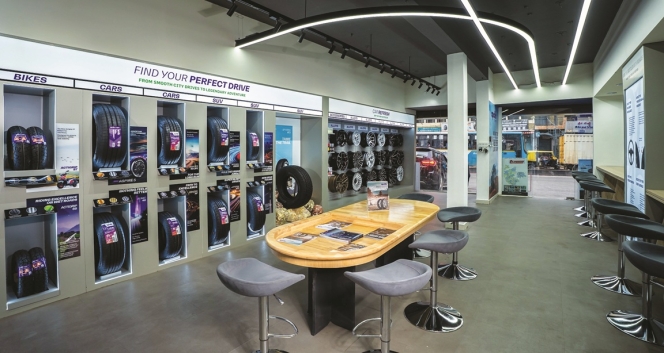
India’s tyre retail industry is undergoing a dramatic makeover, moving far beyond the cluttered workshops and transactional buying of the past. Fuelled by rising demand for premium vehicles, digital-first customers and stronger export momentum, tyre makers are transforming retail spaces into sleek, immersive experience centres. What was once a routine utility purchase is rapidly evolving into a premium, advisory-led mobility experience designed for a new generation of motorists.
India’s tyre retail scene is shifting gears, leaving behind the era of crowded workshops and impersonal counters. In their place, manufacturers are rolling out sleek, thoughtfully designed, tech-powered spaces that echo the luxury of high-end car showrooms. What started as a few bold pilots in big cities has quickly become the go-to playbook for tyre brands eager to win over a new generation of savvy, comfort-loving, digital-first customers.
From urban to rural areas, this transformation reveals a profound change in how Indians approach mobility. Today’s motorists – especially those behind the wheel of SUVs, luxury sedans and electric cars – want more than just a tyre swap. They crave expert advice, a polished atmosphere and a shopping experience that reflects the elegance of their vehicles. Once a utilitarian afterthought, tyre retail is now emerging as a coveted part of the automotive journey.
Strong OEMs and replacement demand in both domestic and export markets underpin the transition.
In FY 24-25, tyre exports from India surged by nine percent year-on-year to INR 251 billion, according to data released by the Ministry of Commerce. With an estimated annual turnover of INR 1 trillion and exports exceeding INR 250 billion, the Indian tyre industry stands out as one of the few manufacturing sectors in the country with a high export-to-turnover ratio.
Though tyre exports have hit a speed bump due to higher US tariffs on select categories of Indian tyres compared to those of competing nations, the long-term prospects for the Indian tyre industry remain strong. According to a joint report by ATMA and PwC India titled ‘Viksit Bharat 2047: Vision and Roadmap for the Indian Tyre Industry’, India’s tyre production volumes are projected to grow nearly fourfold by 2047, while industry revenues are expected to expand almost 12 times to about INR 13 trillion.
Against this backdrop, tyre makers are modernising aggressively to retain customers and build a more profound emotional affinity. The broad shift is visible in how retailers are reinventing their spaces. Lounges with crafted lighting, upholstered seating, minimalist décor and large digital walls are replacing traditional steel racks and dusty counters. Informational murals and heritage display trace decades of tyre innovation, strengthening brand storytelling. Stores increasingly feature curated experience zones where customers can explore tyre technologies, EV-compatible profiles, eco-friendly materials and performance characteristics through visual displays and interactive tools.
A clear sign of this trend is the rise of personalised, advisory-led engagement, replacing the old dependence on technicians. Retailers now profile driving habits, terrain usage, daily distance and vehicle type to recommend tyres customised to each consumer’s pattern. This service-led model is shifting the customer’s mindset from price-first decision-making to long-term value evaluation.
The new premium outlets are designed to deliver a lifestyle-driven, hospitality-grade experience rather than a traditional tyre shop visit. Customers receive personalised mobility recommendations tailored to their vehicle, driving style and needs, supported by smart service innovations like intelligent product selection, quick-fit services and digital scheduling. The space also acts as a community hub for driving enthusiasts, creating a connected ecosystem around the brand. With lounge-style comfort, immersive storytelling and specialised tyre and service packages for luxury and performance vehicles, the outlet blends convenience, premium care and brand-centric offerings into an elevated customer experience.
“Customer experience at the point of sale is another branding exercise poised to change buyer characteristics. Multi-brand outlets often commoditise the tyre-buying experience. That’s why companies are launching exclusive brand outlets with curated customer experiences. Over the next decade, new delivery models will emerge,” said Kavan Mukhtyar, Partner and Leader – Automotive, PwC India.
Apollo Tyres articulates this change as a move towards lifestyle-led retailing. Its new super-premium outlets have been built not as showrooms but as emotionally resonant spaces.
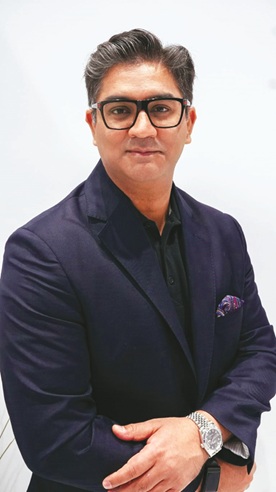
Udyan Ghai, Group Head of Marketing at Apollo Tyres, explained that the company’s new retail architecture is anchored in long-term strategic priorities: “Our move to a lifestyle-led, immersive tyre retail format is driven by our own desire for premiumisation and category leadership. We are looking at elevating tyre retail in India by setting new benchmarks and shifting from commodity selling to a premium, lifestyle-driven experience.”
He said the brand aims to ‘emotionally engage with customers, offer tailored solutions, build a community of driving enthusiasts and tap into premium segments – all while delivering a differentiated, modern retail experience’.
Ghai believes retail ambience plays a decisive role in influencing perception. “A relaxed and well-designed lounge signals comfort, trust and premium value,” he said, adding that such environments elevate tyres from a mundane requirement to a core element of vehicle care and identity.
Digital transparency, he believes, is the second pillar of modern tyre retail. “Digital systems ensure transparency and help demystify tyre selection – tread patterns, speed ratings, durability and fitment. Consumers feel less dependent on a technician’s word and more in control, which boosts their confidence and perceived fairness,” Ghai said.
Customers today are inundated with choices, and digital systems, he said, turn tyre buying into an ‘informed, personalised decision’, comparable to selecting a smartphone, a pair of performance shoes or even a detailed insurance plan. According to Ghai, this new retail model is ‘a strategic investment in the future of mobility retail’, designed to be scalable and to support community-building events, workshops and enthusiast interactions. As India moves towards EVs and connected cars, he said these premium outlets will provide EV-focused tyre expertise, interactive digital tools and personalised recommendations that appeal to younger, digitally savvy motorists.
CEAT shares a similar philosophy. Its national retail revamp focuses heavily on digital immersion, consistent messaging and design-led layouts. Lakshminarayanan B, the company’s Chief Marketing Officer, said the modernised CEAT Shoppes are fundamentally reshaping the category.
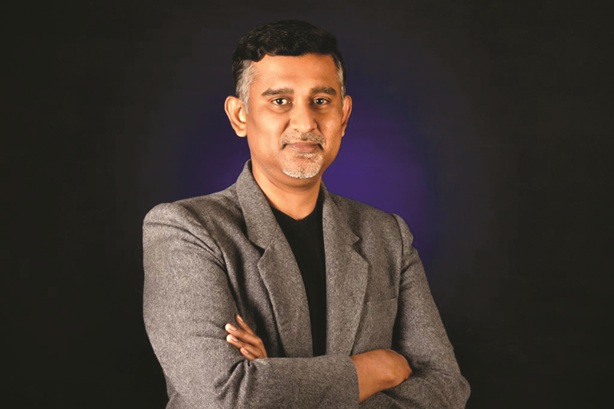
“The modern layouts and digital integration in CEAT Shoppes are revolutionising the tyre-buying experience, making it more experiential and customer-centric,” he said, adding that these updated outlets elevate the experience, build trust through uniform communication and drive decisions by reducing ambiguity around features and value.
Lakshminarayanan highlighted CEAT’s attempt to harmonise customer experience across demographics: “The approach in urban markets through premium stores, product offerings and services is to create access and aspiration for premium customers. The same is replicated in upcountry markets also.”
The CEAT Executive said the company is building for a future where personalisation will be the defining characteristic of tyre retail. “CEAT is focused to drive the future of tyre retail through end-to-end personalisation,” he said.
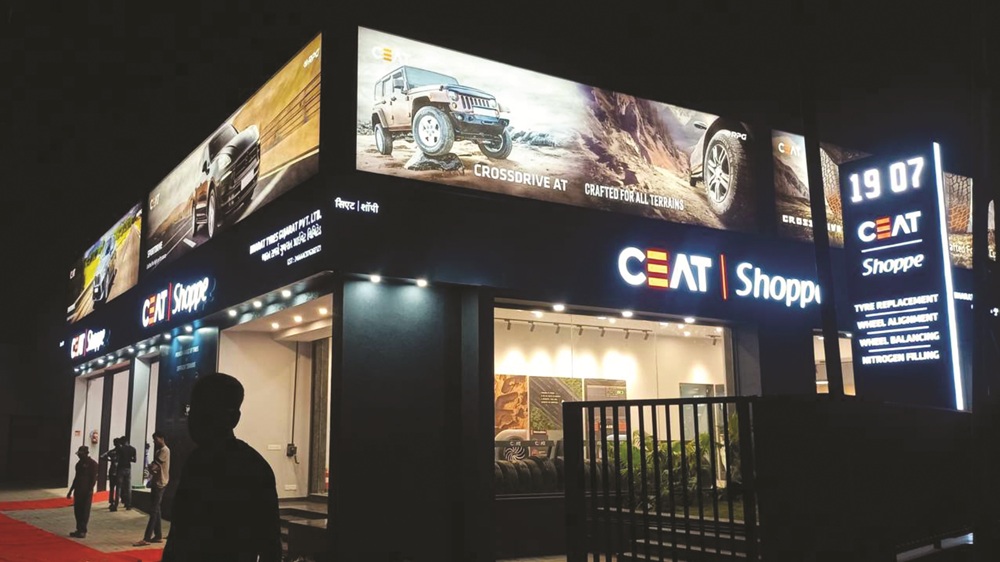
As experiential retail takes hold, service portfolios inside tyre stores are expanding faster than ever. Advanced wheel balancing, laser-driven alignment systems, nitrogen inflation, premium alloy wheel installations, EV-oriented tyre consultations, digital appointment scheduling and real-time tyre-health diagnostics are now standard. Many outlets also provide car detailing, interior cleaning, ceramic coating, PPF application, brake checks, battery inspections and multi-point vehicle health reports, making them full-fledged mobility centres.
Global players have pushed the envelope even further. Michelin’s 25,000-square-foot Experience Store in Nashik features a heritage wall and innovation displays showcasing electric mobility, materials science and environmental responsibility. It houses precision wheel-alignment bays, detailing studios, and accessory galleries. “We are proud to unveil Michelin’s first Experience Centre in India. The sole purpose of this store is to go beyond traditional tyre retail and provide customers with an immersive experience of the brand,” said Shantanu Deshpande, Managing Director of Michelin India.
Continental Tyres is also strengthening India’s premium retail ecosystem through its CPD outlets, which include ambient lounges, diagnostic equipment, premium alloy wheels and digitally enabled guidance. “With our new CPD store in Indore, we bring Continental’s promise of safety, innovation and comfort closer to Madhya Pradesh’s clients,” said Samir Gupta, Managing Director of Continental Tyres India. He added that the brand’s ‘In the Market, For the Market’ approach is central to its retail expansion strategy.
Even in rural markets, tyre retail is becoming more formalised, structured and service-oriented. JK Tyre’s ‘Steel Wheels’ format is targeted at towns with populations under 100,000 and offers standardised layouts, value-added services, best-in-market pricing and instant claim facilities. “Our Rural expansion programme will help us reach the interiors of the real Bharat that is economically vibrant but often underserved. We are not just building retail points; we are also enabling entrepreneurship and access,” said Managing Director Anshuman Singhania.
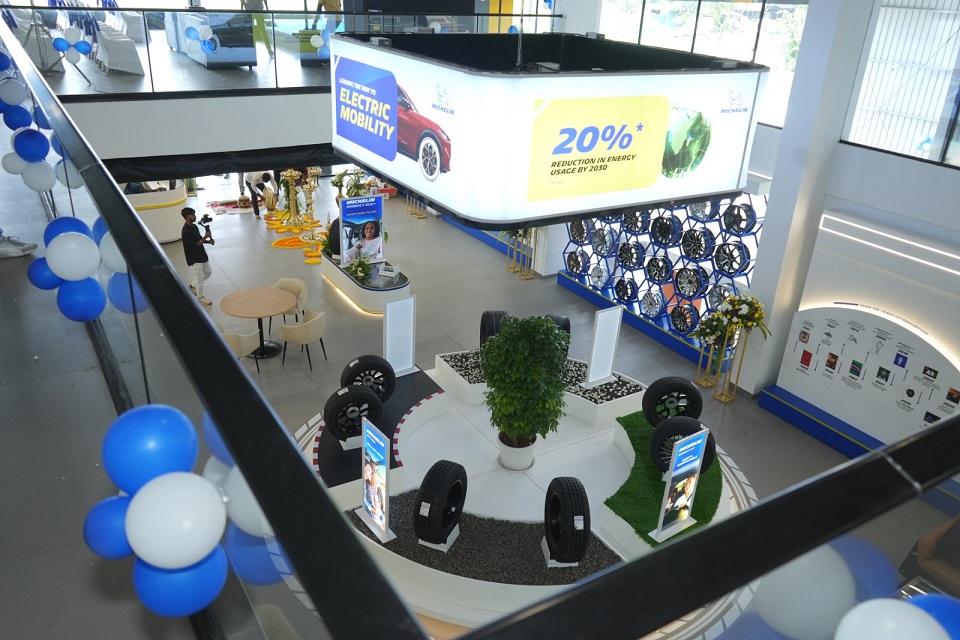 Together, these developments mark a decisive shift in how tyre brands engage customers. Tyre stores are increasingly functioning as lifestyle environments, designed for comfort, informed decision-making, personalisation, transparency and community. The industry is moving away from a product-first mindset to a customer-experience-led philosophy.
Together, these developments mark a decisive shift in how tyre brands engage customers. Tyre stores are increasingly functioning as lifestyle environments, designed for comfort, informed decision-making, personalisation, transparency and community. The industry is moving away from a product-first mindset to a customer-experience-led philosophy.
As premium cars, SUVs and EVs become mainstream, and as younger motorists prioritise digital empowerment and ambience, tyre retailers are aligning with these new expectations. India’s tyre makers are building a retail landscape where experiential engagement, technology integration, service breadth and emotional connection define long-term brand success.
For an industry long anchored in grease, metal and functionality, the transformation is profound. Tyre retail in India is no longer just about fitment; it is becoming a premium mobility experience, curated for a generation that demands clarity, comfort and an elevated relationship with every aspect of vehicle ownership.
Kumho Tire To Build First European Plant In Poland With $587mln Investment
- By TT News
- December 05, 2025
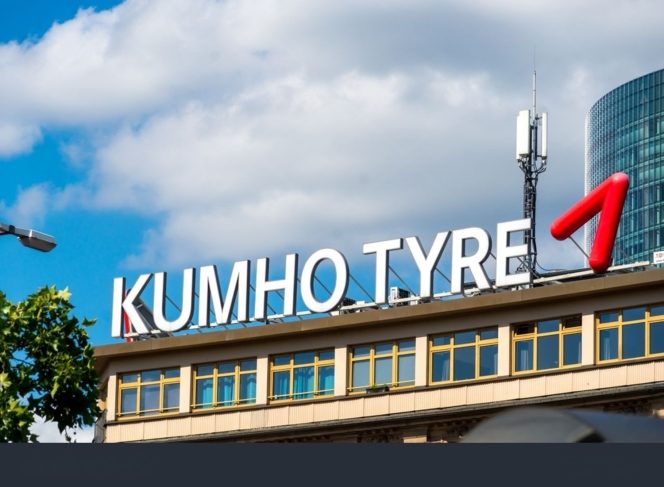
Kumho Tire will establish its first European manufacturing plant in Poland’s Opole region as the South Korean company seeks to expand its position in one of the world’s largest tyre markets.
The group said the factory is scheduled to begin initial operations in August 2028, subject to investment approval and licensing. Kumho plans to produce 6m units annually in the first phase and expand capacity in line with demand. Total planned investment is USD 587 million.
Kumho has spent recent years evaluating multiple European locations, including Poland, based on logistics, labour availability, infrastructure, market access and investment incentives. The company said Opole was selected as the optimal site owing to supply-chain stability within the EU and the region’s supportive operating conditions.
Europe accounts for about a quarter of global tyre consumption and is home to several major automotive manufacturers. The region represented roughly 26.6 per cent of Kumho’s sales last year. The company has previously relied on exports to serve European customers, which it said limited its competitiveness in the market.
The new plant is intended to strengthen Kumho’s ability to supply high-value-added products, including high-performance and larger-diameter tyres, to European vehicle makers.
Kumho currently operates eight production sites across South Korea, China, the US and Vietnam, with combined annual output of 65 millionunits. The Polish plant will complete what the company describes as a production network spanning Asia, Europe and North America.
Jung Il-taek, Kumho Tire’s Chief Executive, said: “The European market occupies a very important strategic position in the global tire industry,” adding that “Kumho Tire will go beyond simple exports and dramatically enhance premium brand value by strengthening quality and service competitiveness through local European production and supply.”


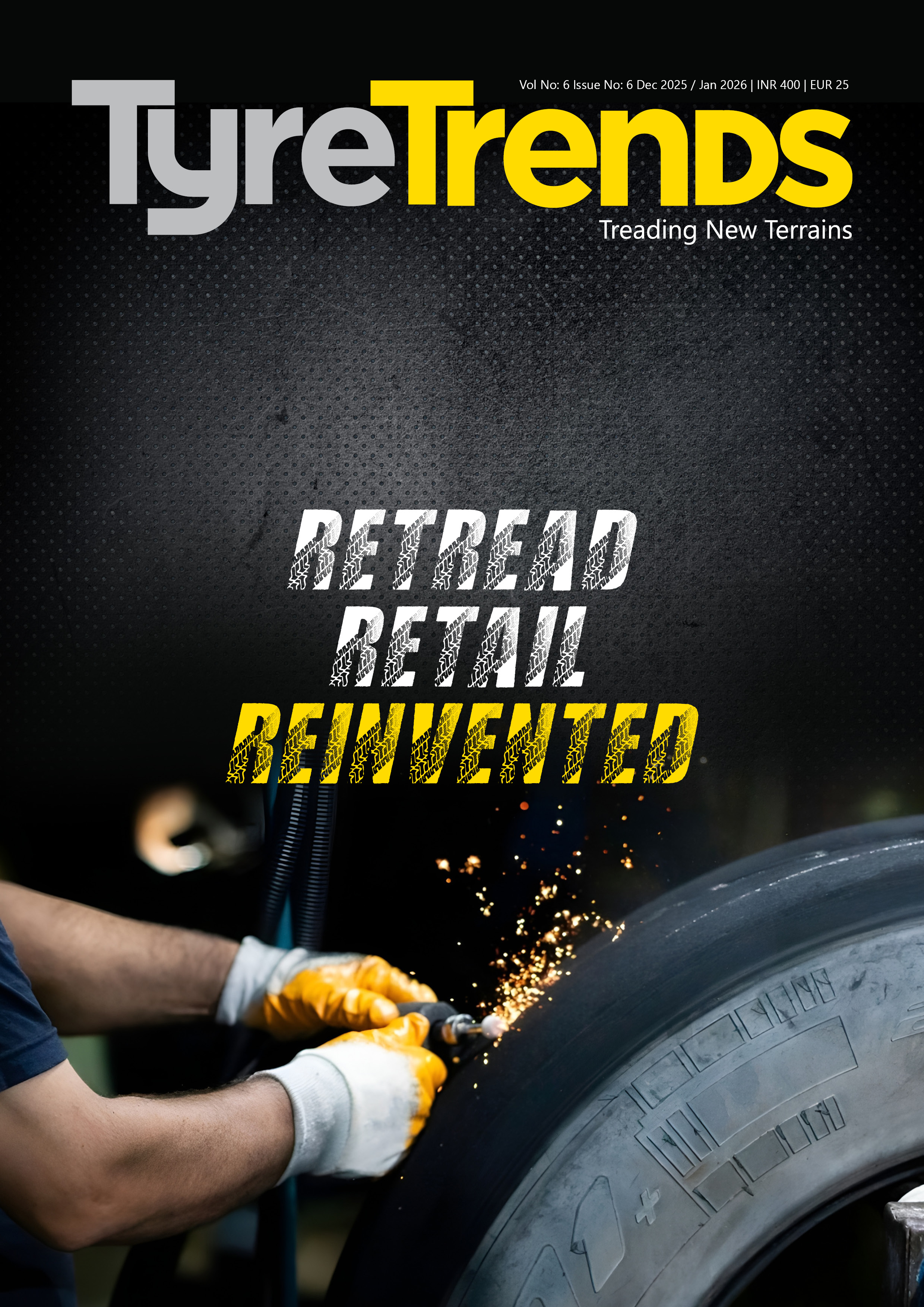

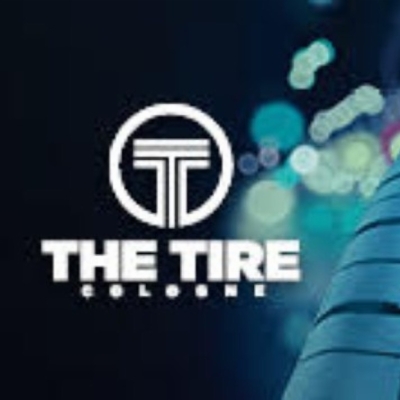


Comments (0)
ADD COMMENT